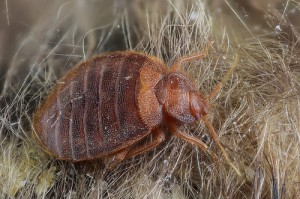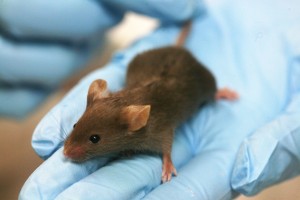
Cimex lectularius, the most common bed bug Source: Gilles San Martin on Flickr
Many of you may not think that bed bugs pose a significant threat in your life. Several believe that only cheap motels and hostels became infested with these parasites, and that I was never at risk of coming into contact with them. It turns out this issue may be closer to home than we think. According to the British Columbia Ministry of Health, there have been increased reports of infestation, particularly in Downtown Eastside Vancouver, but also throughout British Columbia. Houses, apartment buildings, hotels and university and elderly residences across Canada have fallen victim to infestation.
Scientists at Simon Fraser University have recently come up with a concoction of pheromones that attract and trap bed bugs. After years of investigating this issue, they found the right balance of pheromones that causes bed bugs to be drawn to the source of the chemical attractant. The key is histamine, which bed bugs interpret as “safe shelter”. As soon as they come into contact with the histamine, they stay there, despite whether or not they have recently fed. This essentially helps stop their reproduction and spread. This mixture of pheromones has already proven extremely effective, and has even been tested in bed bug infested areas in Metro Vancouver.
Here is a video by Simon Fraser University introducing the scientists responsible for this research:
Bed bugs were basically eradicated in the mid-20th century due to widespread use of pesticides such as DDT. However, in recent decades they have been making a global comeback, likely due to increased international travel and pesticide resistance. Reaching epidemic proportions, bed bugs are returning in higher abundances, distribution and intensity of infestation. For this reason, it has become imperative to find more effective methods of early detection and extermination of bed bugs.

An example of a bed bug bite Source: hiroo yamagata on Flickr
Bed bugs have not been proven to carry infectious diseases, but their bites can be itchy, cause rashes, and some people can suffer severe allergic reactions. Moreover, their presence can be irritating and distressful, causing loss of sleep, anxiety and paranoia. Many people go to great lengths to minimize the effects, including the use of pesticides and radical cleaning. Pheromones are a much less harmful way to get rid of the parasite. Finding the right combination of histamine and other chemicals could have huge implications for the global eradication of bed bugs. Low-income areas are usually unable to afford professional extermination, and since the cost of the pheromone method is low, these regions will have better opportunity for monitoring and preventing infestation.
So, if you ever have the misfortune of getting bed bugs in your home, hopefully it happens after next year, when the pheromone treatments should be widely available.
– Anne Persson



